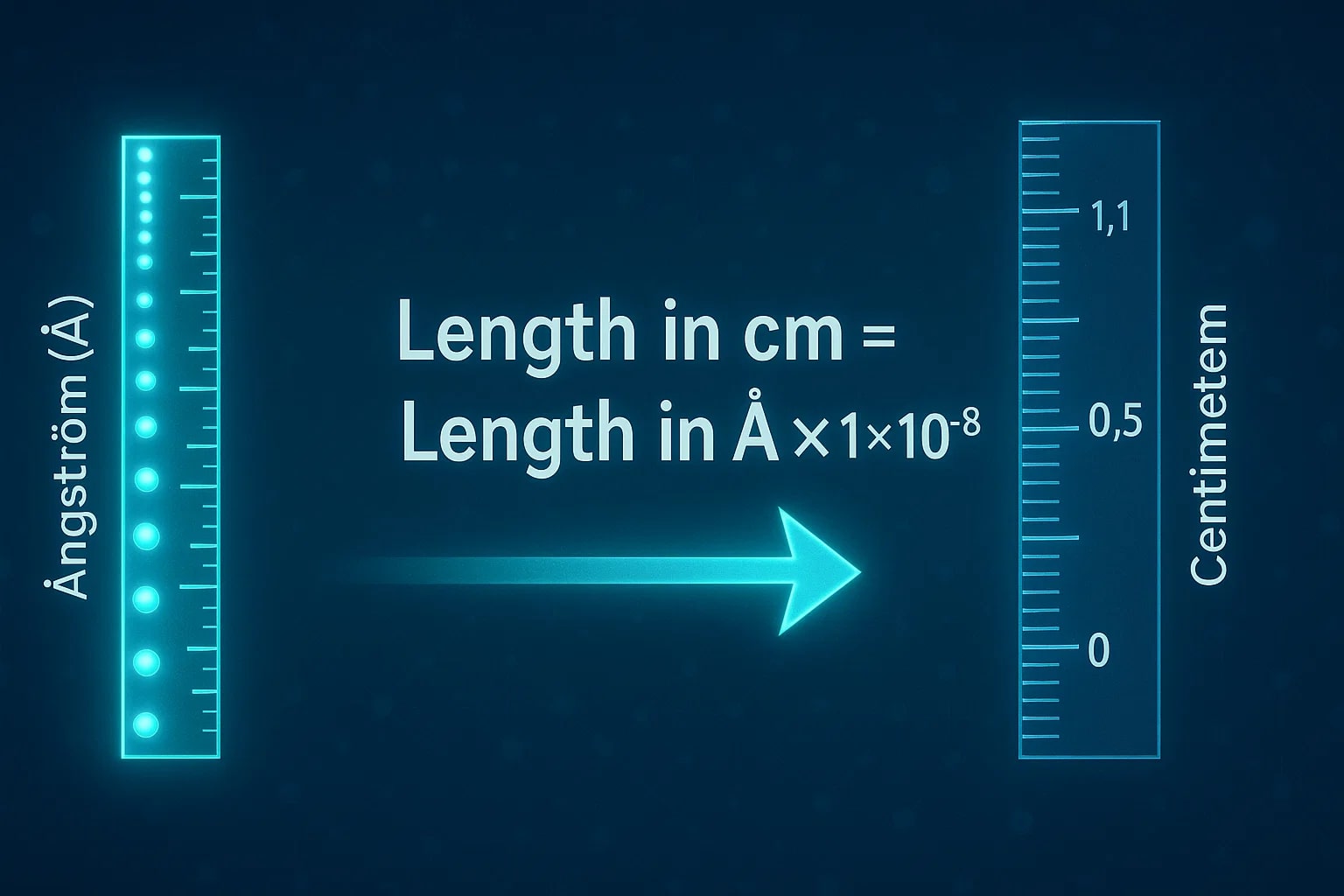angstrom to centimeter – How to convert Å to cm
The angstrom to centimeter conversion is used in fields where measurements get incredibly small — think atomic structures, wavelengths of light, or nanotechnology. The angstrom isn’t part of the SI system, but it’s still a favorite in physics, chemistry, and biology because it’s a convenient shorthand for very tiny distances.

Angstroms and centimeters explained in context
An angstrom (Å) is a unit of length equal to 1×10⁻¹⁰ meters, or 0.0000000001 m. It’s often used to describe things on an atomic or molecular scale, such as the spacing between atoms in a crystal or the wavelength of ultraviolet light. For reference, the diameter of a hydrogen atom is about 1 Å.
A centimeter (cm) is part of the metric system and equals 1/100 of a meter, or 1×10⁻² m. It’s a familiar unit for everyday objects — from the width of a pen to the dimensions on a ruler.
While centimeters are common in daily life, angstroms belong to the microscopic world. This makes converting between them important when moving from atomic-scale research to more familiar, human-scale units.
Formula examples:
1 Å = 1×10⁻⁸ cm
1 cm = 1×10⁸ Å
How to convert angstrom to centimeter
To go from angstroms to centimeters:
Length in cm = Length in Å × 1×10⁻⁸
Example:
If a crystal lattice spacing is 3.5 Å:
3.5 × 1×10⁻⁸ = 3.5×10⁻⁸ cm
The math involves small exponents, so if you don’t want to handle that manually, Jetcalculator’s Conversion Tools can do it instantly.
Did you know?
-
The symbol for angstrom (Å) comes from the name of Swedish physicist Anders Jonas Ångström, who made significant contributions to spectroscopy in the 19th century.
-
Visible light wavelengths range from about 4 000 Å (violet) to 7 000 Å (red).
-
A DNA double helix has a diameter of about 20 Å, which equals 2 nanometers.
-
In solid-state physics, lattice constants for crystals are often measured in angstroms for convenience.
-
Centimeters are widely used in medical imaging for describing the size of tumors or organs, while angstroms are used for detailing molecular components of cells.
-
One centimeter contains one hundred million angstroms — a fact that puts the scale difference into perspective.
-
In surface science, film thicknesses can be measured in angstroms when dealing with ultra-thin coatings like those in semiconductors.
-
The angstrom is still commonly used in X-ray crystallography to describe distances between atoms in a molecule.
The First X-Ray Diffraction Experiment
In 1912, German physicist Max von Laue conducted the first successful X-ray diffraction experiment, proving that crystals have a regular arrangement of atoms. The patterns produced allowed scientists to measure atomic spacing — and those distances were in the range of a few angstroms.
When William Lawrence Bragg and his father, William Henry Bragg, refined the technique, they could calculate precise lattice spacings in crystals. To communicate their findings beyond the physics community, they sometimes converted angstrom values into centimeters for broader accessibility, though angstroms remained the more practical scale for their peers.
This work, done in both angstroms and centimeters, laid the foundation for materials science, molecular biology, and nanotechnology. Even today, researchers regularly switch between these units when explaining their data to different audiences.

Scaling the tiniest measurements
The angstrom to centimeter conversion highlights just how vast the scale differences in measurement can be. While centimeters deal with things you can hold in your hand, angstroms describe the building blocks of matter itself. Converting between the two isn’t just about math — it’s about bridging two worlds: the macroscopic and the microscopic.
For example, if a thin film in electronics is said to be 50 Å thick, converting it to centimeters (5×10⁻⁷ cm) might make it seem unimaginably small — which it is — but it also helps when aligning with other engineering specifications that use centimeters or meters.
In industries like semiconductor fabrication, materials science, and even biotechnology, being able to jump between angstroms and centimeters ensures clear communication between specialists working at vastly different scales.

